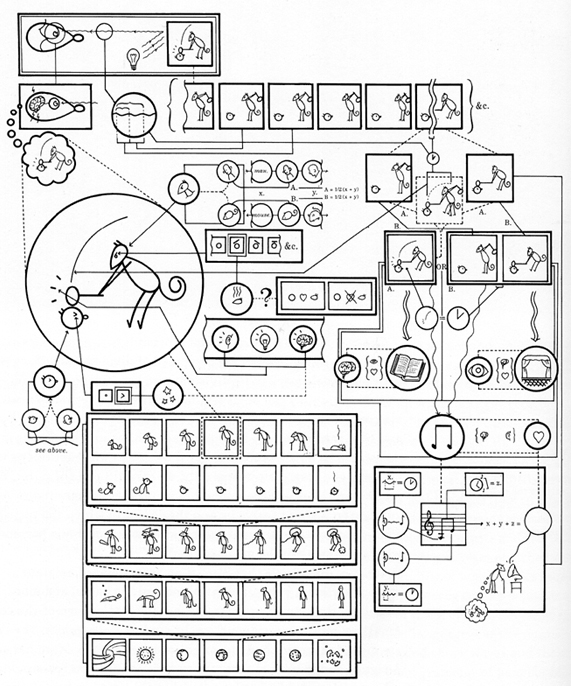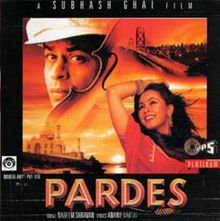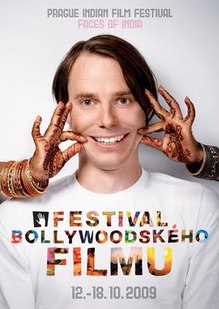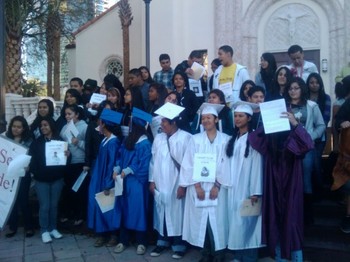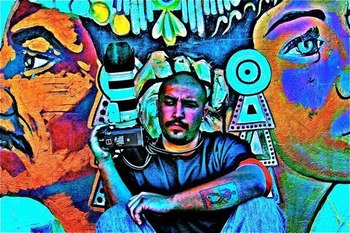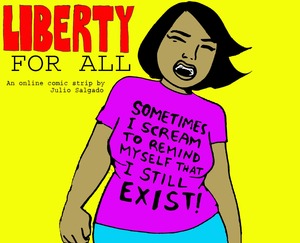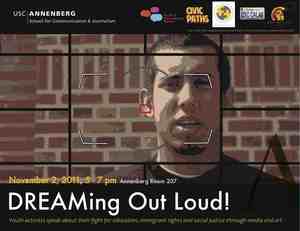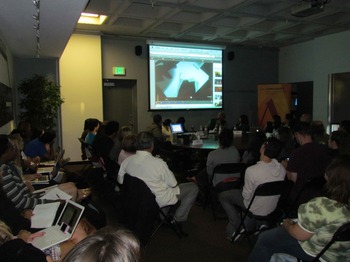Teaching Harry Potter: An Interview with Catherine Belcher and Becky Herr-Stephenson (Part Two))
/One of your teachers faced pushed back from students that the Harry Potter series were books for white kids. Perhaps many readers are thinking the same thing. Yet your title stresses their value for the "multicultural classroom." So, what do the books offer for children of color? How does this approach to "multiculturalism" differ from approaches which seek to match students with writers from the same ethnic and racial background?
In the book, we talk about what we mean by "multicultural" education (all the students and teachers in Teaching Harry Potter are of color and therefore bicultural, meaning they negotiate their home and school cultures on a daily basis) and what we believe, and have seen, the Potter books contribute to the educational process within these settings. The first thing we question is the idea that the "whiteness" of the books negates their use in multicultural classrooms. The nature of the books themselves - their complexity and Rowling's willingness to take on difficult and contemporary issues such as racism, genocide, classism, and difference - make them uniquely valuable, and each of the three teachers illustrate this to great effect in their accounts.
We discuss three features that make the Potter books central to the teachers in our book: Harry's status as a "newcomer" to the Wizarding world - to which Sandra's largely immigrant students relate, a normalization of difference - utilized to great effect by Allegra with her special education students, and the opportunity for multiple interpretations of the text - particularly useful for Andrew's students, but employed by all three teachers. Again, teacher capacity and quality are paramount here. We're looking beyond a base reading of the text; the quality of the approach, interaction and reading experience makes all the difference. One can certainly read Harry Potter simply as a book about white kids in an English boarding school. None of the Teaching Harry Potter teachers took that route - which one might call the dark and easy path. Instead, they challenged their students to use Harry Potter to help them tackle difficult social topics and academic exercises, and to do this with the belief that there was definitely something in Harry's story they could use to help them grow as learners and people.
It's also important to note that we firmly believe in access to literature from multiple arenas; classics and books reflecting a diversity of authors, including those matching the students' background, are vitally important for young readers. But access to a particularly valuable popular work like Harry Potter is important because of its accessibility and all it has to offer. On another level, it is also important because so many white, middle to upper middle class kids DO have ample access to Potter and other popular series at home and at school. In many ways, building students' reading confidence, helping them discover that yes, they too can tackle a book of this length or "that style," whether they end up feeling it is ultimately for them or not, is the most valuable accomplishment.
What's striking about the teacher stories running through the book is the degree to which each adopted their instruction to the particular needs of their students, finding the Harry Potter books to be a highly flexible resource in that regard. How does this customization and remixing process differ from the standard ways that schools are thinking about curriculum in this age of No Child Left Behind?
Finding space for customizing/remixing curriculum was one of the biggest challenges the teachers in our book faced. By not following the standardized curriculum, they were doing something subversive--and, as their stories reflect, they often had trouble getting support from administration and colleagues. Despite the challenges they faced, however, each of the teachers featured in the book did a beautiful job of adapting Potter for their classrooms. Whether we are talking about Sandra, who read the book in Spanish with her ELL students, Allegra, who used the audio books to support her special education students' particular needs for reading support, or Andrew, who approached the book as an accessible gateway to challenging AP content, it is clear in each teacher's story that the needs of her/his students were primary influences on the decisions made around reading the books. In talking with the participating teachers, it seems that the rich stories in the Potter books provided unique opportunities for discussion, analysis, and connection with students' lives. Moreover, just the experience of reading an entire popular book together--as opposed to the excerpts and readers associated with the standardized curriculum--appears to have offered opportunities for deep, meaningful learning.
This kind of responsive teaching is radically different from the standardized curricula commonly found in schools, not because teachers prefer standardization (although some certainly must), but because standardization is thought to be more efficient and its results more easily measurable. As we discuss in more detail in the book, most current policy initiatives reward efficiency and demand accountability--and neither reward nor require responsiveness, flexibility, or creativity. All of this adds up to a demoralizing and frustrating culture for teaching in which teachers' expertise is put to the side in favor of standardized content and methods. Fortunately, the teachers featured in Teaching Harry Potter pushed back hard against these negative forces, instead focusing on how they could provide meaningful learning opportunities for all of their students, even when reading Potter meant working around (and/or subverting) the prescribed reading curriculum--and taking considerable criticism from colleagues and supervisors for doing so.
While each teacher had his/her own approaches to customizing the reading/learning experience, Allegra's story stands out as particularly salient to the topic of adaptation/remixing. A creative and dedicated teacher, Allegra wanted to support her students' developing reading skills and practices and felt that multimedia tools like the series' audio books could supplement the instruction and assistance she could provide for students one-on-one as well as to the class as a whole. As they worked through the first Potter book, Allegra's students moved fluidly between the printed text and multimedia by reading along with the audio books. The highly-engaging audio books provided students with a model for fluent reading as well as created a situation in which students could focus more attention on listening to and comprehending the story rather than struggling to decode every word themselves.
Allegra's story also stands out in relation to adaptation because Allegra was working with special education students. As discussed in Allegra's chapter, Harry Potter is a great book series for use in special education for a number of reasons, a key one being the prominence of "difference" as a theme in the series. All Hogwarts students are special in that they have magical abilities; some (like Neville) require more support for learning than others (like Hermione), and others (like Harry) seem to benefit from an alternative, customized curriculum. As Allegra notes in her chapter, seeing varied, positive representations of difference was beneficial to her students.
Harry Potter's status in the literary canon is still being debated and many teachers may see it as "mere popular culture" and not sufficiently literary to bring into school. Given the choices they face in schools with a diminishing focus on reading in any form, what's the case for why we should teach Harry Potter and not say Animal Farm?
Why not both? Granted, the limitations you speak of do exist and districts, schools and teachers must make increasingly difficult decisions about what to include, there are creative ways to include popular books in the curriculum. Andrew, who is the high school AP English teacher in our book, never actually reads complete Potter books with his students. Instead, he uses key excerpts from both the books and the movies to support teaching particular literary aspects. In using these regularly, his students gain a sense of the stories and many end up reading the books on their own. Sandra does read one book a year with her students, but it takes a great deal of planning to make it work, including framing her rationale for using the books. The key for all three of the teachers in our book is a set of very clear goals for their students around using Harry Potter. They don't just read Harry Potter because it's fun or the teachers like the books.
Each teacher uses the texts or movies to teach specific points in the curriculum, encourage habits of mind, or build stamina around reading. All three share the goal of building their students' confidence as readers; because Harry is accessible and also smartly written (it links to so many literary traditions, for example) each teacher uses it to catch his/her students by surprise - eventually each class realizes they've engaged the story, understand it, can connect it to other stories and text, and can discuss its merits and/or weaknesses, in many cases using high level academic language, as in the case of Andrew's AP English class. His students would certainly be primed to critically examine Animal Farm, for example. They hold a "literary confidence" not necessarily present previous to discussing/analyzing Potter.
The debate around including popular texts in school curriculum will certainly remain a constant, especially since debates around which "classics" to include in English courses seems never ending. But there is certainly a current wave of coolness around reading - prompted by Potter and sustained by such series as The Hunger Games - that if recognized, harnessed, and used could serve to help students connect to the "classic" texts that have actually influenced a great deal of popular works.
How do we measure the success of these teachers' attempts to use Harry Potter to engage with their students? And why do you think that school systems are so slow to recognize and reward this kind of success?
Measuring teacher success - successful teaching - is probably the biggest educational debate right now. The growth over time data we talked about above is one example of how teachers are increasingly measured by one of the few types of hard data that are produced by teachers and schools en masse. Otherwise, the criteria for "success" becomes more objective and therefore difficult to define and evaluate in large numbers. In the book, we include a list of 9 "shared commonalities" - characteristics the Teaching Harry Potter teachers hold in common that we believe serve as the basis for (and evidence of) their success. One of these does include standardized test scores, but that serves more as one criteria, not the central identifiable aspect of the teachers' success. To our mind, these commonalities are identifiable and clearly contribute to student success. However, we spent time talking with the teachers, getting to know their philosophy and role in their respective schools. It took time to identify the roots of their success, something schools and districts don't have a lot of to work with.
We also hold a particular view of what it means to be a successful teacher. For example, we believe popular culture and media are valuable in school and consider wise and appropriate use of them with students a mark of great teaching. Many would disagree, however. We could spend a long time arguing our point, which we've done, actually, and still not have any kind of consensus on the issue, let alone on how to measure what using popular culture successfully would look like. This is one of the major obstacles faced by each of the teachers in our book, they had to constantly justify their use of Harry Potter books and media and in some cases were actually allowed to use the books because of their successful testing records. So, in the end reading Harry Potter with one's students became the reward for the kind of "success" that could be easily and "objectively" measured - and that's where school districts and policy makers live right now.
Catherine Belcher works with LA's Promise, a nonprofit organization focused on improving schools and empowering neighborhoods in South Los Angeles. She currently serves as the Director of Teaching and Learning at West Adams Preparatory High School. She earned her Ph.D. from the School of Education at the University of Pennsylvania in 2006, where her work focused on Latino educational history and language access. She then served as a new teacher supervisor at St. Joe's University in Philadelphia and as an Assistant Professor in the School of Education at Loyola Marymount University. A lifelong educator, Catherine taught social studies at both the secondary and middle school levels, and has served as a mentor, lead teacher, and curriculum designer. She has presented on the use of Harry Potter in educational spaces at several conferences, including Enlightening 2007, Azkatraz (2009), Infinitus (2010) and NAMLE (2011). Catherine lives in LA with her husband and 11 year old daughter, a Potter aficionado in her own right who proudly displays the Ravenclaw banner in her room, although some days she joins her mom in the Gryffindor common room so they can talk books and dare each other to try eating the grey Bertie Botts Beans.
Becky Herr-Stephenson is a media researcher focused on teaching and learning with popular culture and technology. She earned her Ph.D. from the Annenberg School for Communication at the University of Southern California in 2008. She has been a part of several organizations and projects aimed at informing and inciting innovation in education, including the Digital Media and Learning Hub within the Humanities Research Institute at UC Irvine and the Joan Ganz Cooney Center at Sesame Workshop. Currently, she is working as a Research Associate with the Annenberg Innovation Lab through a partnership between USC and the Cooney Center. She is a co-author (with Mizuko Ito and others) of Hanging Out, Messing Around, and Geeking Out: Kids Living and Learning with New Media (2009, MIT Press). Becky has presented papers on Harry Potter and youth culture at a number of conferences, most recently, Infinitus (2010) and NAMLE (2011). She lives in Los Angeles and is anxiously awaiting the arrival of her first child, who she hopes will be sorted into Ravenclaw (not Slytherin).


